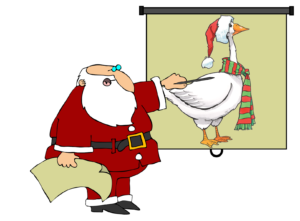Organizations are generally becoming more sensitive to being politically correct and taking ethnic sensitivities into consideration. For years, Native Americans have insisted they deserve more respect in the way they are publicly portrayed. For example, the Washington Redskins continue to draw fire for not changing their name and the Atlanta Braves are criticized for the tomahawk chop. Last year, however, the Cleveland Indians were praised for dropping their their controversial Chief Wahoo logo. The latest Native American icon to go missing is the maiden from the Land O’Lakes logo. Katherine J. Wu (@KatherineJWu) reports, “Just ahead of its 100th anniversary, Land O’Lakes has retired Mia, the indigenous woman who once featured prominently in its iconic logo, from all packaging.”[1]
Native American sensitivity to corporate logos is understandable. Award-winning Native American author, speaker, and activist Rebecca Nagle has stated, “It’s really hard to see a racist caricature of your people literally every day. It’s a hard experience to explain. Very rarely are we portrayed as contemporary people, as alive in American society. What you see along with Native mascots in sports is caricatures of Native people — red body paint or headdresses that they bought at the dollar store or doing the tomahawk chop. None of those things are representative of Native culture. … Stereotypes that honor Native Americans are harmful — just like any other group, holding on to stereotypes undermines our rights. It almost always portrays Native people as existing only in the past: savage, warlike, primitive.”[2] No one ever argued the lovely Mia was savage, warlike, and primitive; nevertheless, Alex Robinson reports, “The change was welcomed by those who say the image is racist and an example of cultural appropriation.”[3]
Land O’Lakes has discovered that, even when trying to do the right thing, controversy can seldom be avoided. The old adage “there is two-sides to every story” certainly applies in this case. Robert DesJarlait (@R_DesJarlait), an artist, writer, and member of Red Lake Ojibwe Nation in northern Minnesota, insists, “She was never a stereotype.”[4] His feelings run deep; after all, his father drew the Land O’Lakes maiden. He explains, “I knew Mia had devolved into a stereotype in many people’s minds. But it was the stereotype some saw that bothered me. North Dakota state Rep. Ruth Buffalo (D), for instance, told the Pioneer Press in St. Paul, Minn., that the Land O’Lakes image of Mia went ‘hand-in-hand with human and sex trafficking of our women and girls … by depicting Native women as sex objects.’ Others similarly welcomed the company’s removal of the ‘butter maiden’ as long overdue. How did Mia go from being a demure Native American woman on a lakeshore to a sex object tied to the trafficking of native women?”
It would be absurd to assert DesJarlait’s father Patrick intended to demean his people when he reworked Mia in the mid-1950s. Mia was first drawn in 1928 by Brown & Bigelow illustrator Arthur C. Hanson, was redesigned as a native maiden kneeling in a farm field holding a butter box in 1939, and, finally, redrawn by DesJarlait’s father in 1954. DesJarlait continues, “With the redesign, my father made Mia’s Native American connections more specific. He changed the beadwork designs on her dress by adding floral motifs that are common in Ojibwe art. He added two points of wooded shoreline to the lake that had often been depicted in the image’s background. It was a place any Red Lake tribal citizen would recognize as the Narrows, where Lower Red Lake and Upper Red Lake meet.” He concludes, “Mia’s vanishing has prompted a social media meme: ‘They Got Rid of The Indian and Kept the Land.’ That isn’t too far from the truth. Mia, the stereotype that wasn’t, leaves behind a landscape voided of identity and history. For those of us who are American Indian, it’s a history that is all too familiar.”
Jessi Devenyns insists, “Packaging matters. … A successful mascot bonds people to brands, and the power those images can last for decades, translating into positive sentiment about a brand throughout a consumer’s life. The familiar image of the woman on the Land O’Lakes label has been on grocery store shelves for generations and its removal is likely to attract the interest of consumers who notice a difference.”[5] Land O’Lakes’ executives appear fully aware their decision to remove Mia was controversial. As a result, they remain silent about the change. Lisa Lacy (@lisalacy) reports, “The brand has virtually nothing to say about Mia or her disappearance after 92 years. ‘As it approaches its 100th anniversary in 2021, the co-op has reflected on its treasured history and made the decision to showcase its greatest strength: its farmers,’ according to a statement announcing the logo change. … By not talking about Mia or its decision to remove her, the brand doesn’t risk upsetting consumers on either side of the political spectrum. … But, [Americus Reed, professor of marketing at the University of Pennsylvania’s Wharton School, believes] this is a mistake, in part because younger consumers are increasingly demanding to know what brands stand for — and research has shown purpose-driven companies that take stands are more respected, even by consumers on the other side of the spectrum.”[6]
Perhaps silence isn’t all that bad. In fact, it may be golden. Land O’Lakes is caught between the proverbial rock and a hard place. Lacy reports, “A recent U.C. Berkeley study found that more than half of the 1,000 Native Americans it surveyed are offended by native mascots. That includes 57% who strongly identify with being Native American and 67% of those who frequently engage in tribal cultural practices who said they are deeply insulted by caricatures of Native American culture.” DesJarlait argues Mia, as drawn by his father, wasn’t a traditional, demeaning caricature; nonetheless, critics have called such logos dehumanizing, offensive, and last vestige of white privilege. On the other hand, some people are likely to view Land O’Lakes decision as caving in to political correctness. Peggy Flanagan, Minnesota Lt. Governor and member of the White Earth Band of Ojibwe, tweeted, “Thank you to Land O’Lakes for making this important and needed change. Native people are not mascots or logos. We are very much still here.” And Kevin Allis, chief executive of the National Congress of American Indians, stated, “We encourage all companies that peddle products displaying stereotypical Native ‘themed’ imagery to follow suit.”[7]
Footnotes
[1] Katherine J. Wu, “Land O’Lakes Drops the Iconic Logo of an Indigenous Woman From Its Branding,” Smithsonian Magazine,
[2] Sheryl Ring, “How do Native people feel about Chief Wahoo and the tomahawk chop? A conversation with activist and author Rebecca Nagle,” Vox, 28 January 2020.
[3] Alex Robinson, “Land O’Lakes Removes Native American Woman From Label,” Modern Farmer, 15 April 2020.
[4] Robert DesJarlait, “My Native American father drew the Land O’Lakes maiden. She was never a stereotype.” The Washington Post, 29 April 2020.
[5] Jessi Devenyns, “Land O’Lakes quietly removes Native American woman from label,” Food Dive, 20 April 2020.
[6] Lisa Lacy, “Land O’Lakes Isn’t Talking About Its Logo Change, and That’s a Big Mistake,” Adweek, 1 May 2020.
[7] Christine Hauser, “Land O’Lakes Removes Native American Woman From Its Products,” The New York Times, 17 April 2020.





